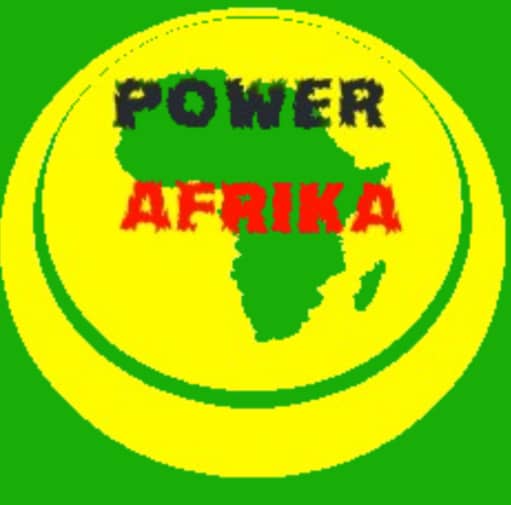
In the lush, rolling hills of Murang’a County, Kenya, where the Ngondo River flows with untamed energy, a young man named John Magiro Wangari turned a childhood dream into a beacon of hope for African youth. At just 18, John, a self-taught innovator with no formal engineering degree, built a mini hydropower plant from scratch, harnessing the river’s power to light up over 2,000 homes, schools, and businesses across the Mt. Kenya region. His story is a testament to the power of African ingenuity, resilience, and the unyielding spirit of youth determined to change their communities for the better.
From Kerosene Lamps to Hydropower: John’s Journey
John Magiro Wangari grew up in Mathioya, a rural village where electricity was a distant dream. The nearest grid connection was 15 km away, forcing families to rely on kerosene lamps for light. John recalls the struggle of studying under flickering flames, often walking a kilometre to fetch more fuel—a task that exposed him to harmful fumes and strained his family’s limited resources. Scoring a D- in his KCSE exams, John faced skepticism from his community, with some even suggesting he needed psychiatric help when he began tinkering with power generation. But John saw potential where others saw impossibility: a nearby waterfall on the Ngondo River.
Inspired by a bicycle dynamo’s ability to produce light, John sold his rabbits and Napier grass to fund his first project. Using everyday items like a bicycle rim, a car alternator, and scrap metal, he built a small turbine system that spun with the river’s flow, generating electricity for his family. Word spread quickly, and soon, neighbors were knocking on his door, eager to connect to his makeshift grid. By 2016, John had scaled his operation with support from the Kenyan government, the National Environment Trust Fund (NETFUND), and global partners like HydroBox and WWF, transforming his idea into Magiro Hydro Electricity Limited—a Ksh 105.7 million hydropower plant that now serves over 2,000 off-grid customers.
John’s plant uses run-of-the-river technology, diverting water through a pipeline to spin turbines without disrupting the environment. The water returns to the river, ensuring sustainability—a model that has reduced CO2 emissions by 170 tonnes per year. Local businesses, like the Kiriti Tea Factory, have seen improved production quality thanks to stable power, while children can now study at night, and streets are safer with powered lights. John’s vision doesn’t stop here—he aims to reach 5,000 households by 2027, proving that hydropower innovation can bridge Africa’s energy gap.
PowerAfrika’s Take: A Spark for African Youth
At PowerAfrika, we believe John Magiro Wangari’s story is more than a tale of hydropower innovation—it’s a call to action for African youth to harness their potential and solve local challenges. John’s journey shows that education isn’t the only path to impact; creativity, determination, and a deep love for community can light up the continent. We’re inspired by his use of renewable energy to empower rural Kenya, a reminder that sustainable solutions are key to Africa’s future. This aligns with our mission to uplift African youth, much like our advocacy to rename Kotoka International Airport—a symbolic step toward healing Ghana’s soul. Join the movement by signing our petition at https://powerafrika.com/rename-kotoka-airport/.
Empowering Communities with Renewable Energy Tools
John’s hydropower plant highlights the transformative power of renewable energy. For those inspired to bring sustainable solutions to their own communities, consider exploring solar options like this solar charger, perfect for off-grid living and reducing reliance on fossil fuels. If you’re looking to share your own story of innovation, create a compelling video with Renderlion, an AI video generator that can help you craft visuals as powerful as John’s impact. And for those working on water-based projects, a reliable water pump can be a game-changer for managing resources efficiently.
Connecting the Dots: PowerAfrika’s Broader Mission
John’s story resonates with PowerAfrika’s commitment to showcasing African youth who defy the odds. It reminds us of our previous post on Ghanaian students advocating for change, where we highlighted the power of youth-led movements. Just as John brought light to his community, we aim to illuminate the path for African youth through stories, tools, and advocacy that inspire action.
Little Known Facts About Hydropower in Africa
- Ancient Roots: Hydropower isn’t new—humans have used water to generate energy since the Sumerians in 400 BC, but it wasn’t until the 19th century that it was harnessed for electricity.
- Kenya’s Green Energy Leader: Kenya generates 80% of its electricity from renewable sources, with hydropower playing a key role alongside geothermal and solar.
- Environmental Impact: Run-of-the-river hydropower, like John’s, produces zero emissions and doesn’t require dams, making it one of the most eco-friendly energy sources.
